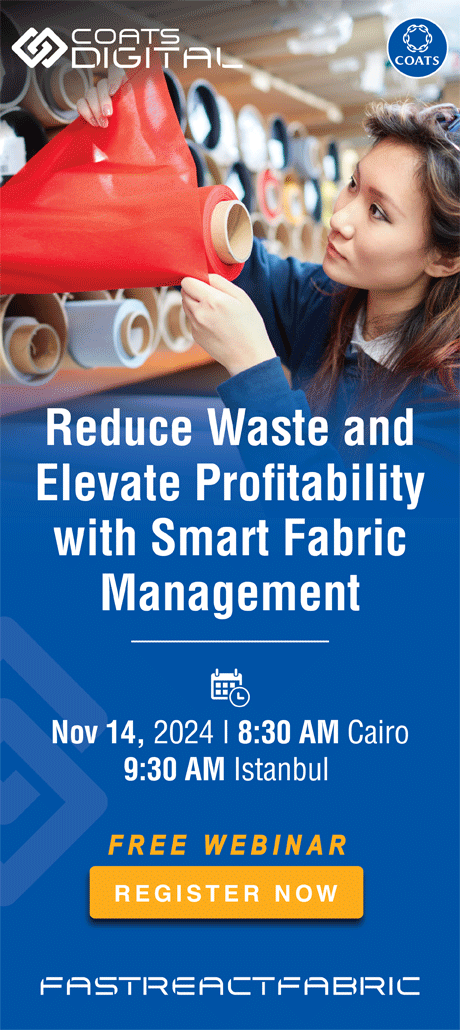Here we had an interview with the Iranian inventor Mr. Shahin Seyed Saleh, he has patented number of inventions regarding viscose (cellulosic fiber) and protein fiber.
He graduated in Textile Chemistry Engineering from Shahre-Ray University and was born in November of 1981. He has launched a vast research on regenerated fibers, improvement of the wet spinning process, and producing regenerated fibers especially cellulosic fibers.
He has also been awarded a Gold medal, and the special award of Double Gold from the British Inventors Society, so far he has been granted 6 patents regarding regenerated fibers. So the Iranian Textile Industry is in need of these types of achievements and it’s the duty of sponsors and financial backers to support the potential inventions.
When did the idea of these inventions cross your mind?
It was exactly in the third grade of the university that I started thinking of producing new fibers, I was mostly interested in the fibers science part of my field and I always followed any matters concerning producing fibers, the most part of my interest was regenerated fibers, especially cellulosic fibers.
However I was always wondering why this part is not an important part of fibers science and ignored in exams, the category of regenerated fibers was the least important part, the information in any sources I looked for was incomplete, and I never found any answers to my questions, I encouraged myself into starting a research and experiment about regenerated fibers, I was really curious to see this forgotten world of fiber industry, almost no one was really familiar with regenerated fibers they hardly had seen them.
In the cold winter of 2001 I started my research to see how real the words in books can be in practice, I decided to see the fibers myself by my own efforts. I began the initiative experiments with Casein Fibers, a kind of regenerated protein fiber made from the protein in milk.
But I saw how different is the formulation in the book from really, in reality, I got nothing, as the alkaline casein merged in the acidic bath, it coagulated but got dissolved in the acidic bath I could not get any fibers, the harder the experiment got the more determined I got to do something about it.
I treated casein with glucose and formalin, with the help of formalin I got fibers but too brittle, but what I learned was the way and a new gate to continue to invent something. I hopelessly started testing other types of proteins to get fibers out of, but they were not soluble in any solvents. How could I obtain a new fiber but at least I had 2 new protein resources to get fibers from.
I tried and tried to dissolve them but nothing more than failure. I was frustrated and left everything there and then and I was off on the New Year vacation. When I got back to my so-called lab I saw the dissolved protein in the beaker which was more than ready for coagulation my God I had what I wanted to have a spinning dope ready for coagulation from a new highly strong protein, The point I overlooked was the dissolution process needed time and I was not paying attention the whole time. I made my new invention and opened my way to other new inventions I got 2 new fibers along with more sources to get fibers from, I called my fibers New Regenerated Protein Fiber.
Wherever I took my eyes I could see the name of Courtaulds Fibres the great manufacturer of regenerated fibers in England, I tried to find them but no sign of them it was as if they had vanished into thin air, I could not get hold of them, no responses from them it was like the company is history, in fact it was but I did not know their company is shut down, I could not believe this famous company is history for good.
After no response from Courtaulds I tried other companies, DuPont welcomed the projects at its Virginia Plant, but my problem was I did not know what my fibers were useful for so DuPont after 2 months in February 2003 decided that the technology did not complement their current high-performance fibers, the decision was made at DuPont Advanced Fibers Systems Division.
I really was not aware that my fibers have high-performance applications I didn’t have enough facility to test them anyway as a result they did not know the real use of the fibers. As for textile applications they were transferring their textile department to INVISTA, INVISTA took over every textile fiber in 2004.
I had a hard winter but more than decisive to continue, I carried out new research on regenerated cellulosic fiber, mainly viscose (Rayon) fibers, I had a real hard time with getting hold of Carbon disulfide CS2, the main chemical in viscose production but finally I got it and got started.
You have had your main focus in your research on cellulosic fibers, especially viscose fiber can you tell us the reason?
Because it was my first dream to make viscose fibers, earlier at my university time I had a dream of opening up a factory producing viscose fibers with one of my friends for the first time in Iran, that was the pursuit of my dreams, moreover, viscose was the first manmade fiber, and it had a crucial role in the fiber industry in the second world war.
My main reason for working on cellulose was to improve the chemical and physical properties of viscose fibers, which is called chemical modification on cellulose, there was plenty of Japanese literature concerning cellulose modification so I continued my dream was to develop something new . in fact cellulose triacetate is a chemically modified cellulose and there are a lot of modified cellulose instances another one is CMC (Carboxyl Methyl Cellulose).
I made my own new modified cellulose and at some point, I even changed the whole chemistry and made a new polymer out of cellulose, it has its own unbelievable texture and properties. I made at least 5 new unique esters from cellulose and 2 new polymers, as well as a new viscose fiber with a new spinning system without using carbon disulfide, the toxic, expensive, and environmentally unfriendly main compound, I made the viscose process much shorter and of course very economical indeed.
I have had negotiations, correspondents, and transactions with DuPont in America, the former research staff of Courtaulds in England, in Austria with Lenzing Fibers, INVISTA again in America, Toyobo in Japan etc…,
How did you find the support for your inventions in Iran?
I here give my special thanks to Iran Polymer Research and Development Center and Dr. Entezami in particular for his kind contribution to my projects and for encouraging me, who is now currently teaching at the Chemistry Department of Tabriz University.
I also sincerely thank from the bottom of my heart my helpful friend Andy in England the former high research staff of Courtaulds who really helped me out in England to introduce the technology to the University of Birmingham and in London to public Media and receive the Gold medal and the special award.
Have your projects been ever introduced aboard?
Yes, of course as I said I received a Gold medal and a special award of Double Gold from the British Inventors Society in an invention show held in London, also my projects were assessed by a professor,a cellulose specialist who had worked on cellulose for 40 years at University of Birmingham he was very impressed and said this person is a dreamer or a genius if you can do what you say is a dream, yes even according to the Japanese literature, my inventions were a dream, it was their dream to make one of my inventions.
Also in London, the head of Kingston University told me when we were making Concord we were looking for such fibers to apply in the body of the aircraft. I also received some awards from the Iranian Ambassador to Great Britain, I had an interview with BBC and the Guardian.
Please elaborate more on your patented inventions.
1. I made a new polymer comprising of cellulose and protein, it’s a new graft copolymerized polymer, as you know it is a challenge when cotton and wool are blended in a long and short spinning system, a very difficult process so when we have both fibers in one fiber filament the spinning system is much shorter.
2. Newly regenerated protein fibers: They are unique fibers with special properties and have never been produced so far, they can be used in the textile industry as well as medical and industrial end uses.
3. New viscose fibers: The new fibers are spun in a totally new way without the presence of carbon disulfide, with a very short economical, inexpensive and environmentally friendly process. The fibers have better properties than conventional viscose. When CS2 is eliminated the whole troublesome process of viscose is gone now it is really easy for producers to produce viscose. CS2 causes birth defection, is toxic and releases H2S and highly harmful sulfur derivates into the air and nature.
4. New esters of cellulose: I have synthesized 4 new types of esterified cellulose that very thermal resistant and these esters have not been so far possible to be produced.
5. Gel spinning of viscose; a new spinning process, which, gives unique luster to the cellulose along with another polymer.
6. A new polyurethane, this is my newest invention I am working to expand the properties but so far so good. I believe viscose fibers have fantastic market in textile fibers so producing these new generations of fibers can be absolutely lucrative the future of viscose is very promising, it’s usually ranking in 3rd or 4th in the fiber production, it is highly used in Turkey, and other textile countries so founding its production plant can give us a good market of export.
These projects are very fundamental and highly potential and can be most successful if they are put into practice.


















